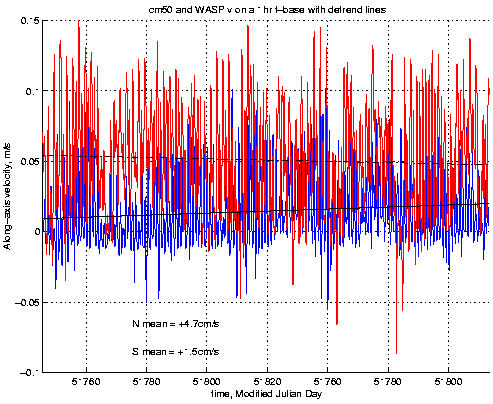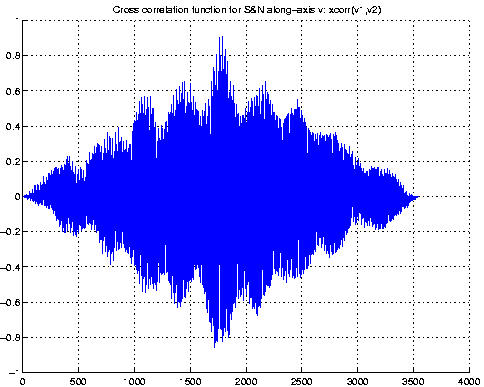
load_wasp2161; load_50mm;
The script cross_corr_curr.m does the
following:
Here is an ascii file of the 2 resulting v time series. The 3 columns contain: (1) modified julian day (time centered on observed hour); (2) the along-axis component of hourly mean velocity at the N meter (2161m depth, 16m above sea floor); (3) the along-axis component of hourly mean velocity at the S meter (2168m depth, 50mab).
Here are the 2 v time series and their trend lines. The red curve is the N data, while the blue curve is the S data. The Flow Mow cruise and heat flux observations occurred between MJD 51760-51776.

Now the Matlab function xcorr(v1,v2) calculates the cross-correlation function (v1=south data, v2=north data). The function (plotted below) has a domain of 3549 points and a maximum amplitude at point 1787. 3548/2=1774, so the cross correlation peak is (1787-1774=) 13 points to the right of the domain center. If you take the median of all values greater than 0.8, you get 1775, suggesting that the N meter leads the S meter by 1 hour, rather than 13 hours. I wonder how you decide what the exact peak is in order to specify the phase lag?

Next: PSD and CSD approach to coh and phase